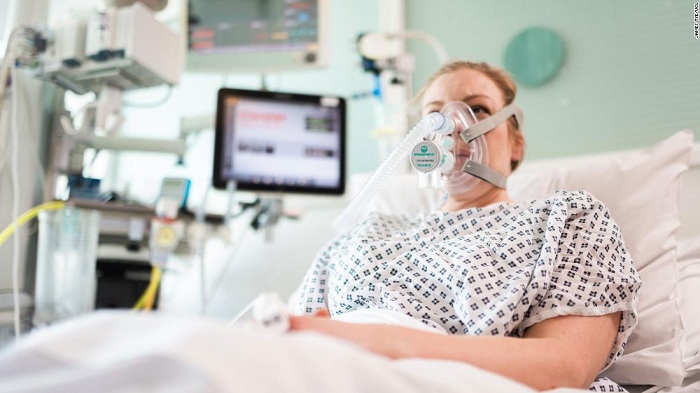Hospital mortality rates are considerably lower for patients in hospitals equipped with Respiratory Support Units (RSUs) compared to those without, according to a new audit report from the British Thoracic Society (BTS).
The National Respiratory Support Audit 2023 indicated that hospital mortality in RSU-equipped hospitals stood at 23%, in contrast to 35% in hospitals without RSUs. Despite 60% of hospitals having a designated RSU, the audit revealed that only 42% of patients needing enhanced respiratory care received it in such units due to limited capacity.
Additionally, 44% of hospitals operated with a nurse-to-patient ratio of 1:4-1:8, even though national standards recommend a 1:2 ratio for initiating acute non-invasive ventilation (NIV), which accounts for about half of the RSU caseload. The standards caution that enhanced care cannot be consistently provided with a 1:4-1:8 ratio.
The clinical audit lead at the BTS, Dr. Mike Davies, commented on the findings, stressing that patients in hospitals with RSUs happened to have significantly higher survival rates, especially those treated in these units. He highlighted that treatments like acute NIV are life-saving when administered in the appropriate setting at the right time. However, due to limited capacity, many patients were still treated in regular wards. Dr. Davies stressed the importance of recognizing the potential of RSUs and ensuring they are adequately resourced and staffed to improve patient care.
The BTS report went on to note that building on previous audits, new Respiratory Support Audit was the first national audit of enhanced respiratory care in acute hospitals in the UK. The audit, conducted from February 1 to March 31, 2023, included an organizational questionnaire and a patient questionnaire, gathering records from 119 hospitals.
Key findings indicated that, compared to pre-pandemic studies, there had been no significant increase in the provision of enhanced respiratory care, with only 30% of hospitals reporting 24/7 consultant medical supervision of respiratory enhanced care. Central monitoring of patients’ vital signs was available in 22% of hospitals without an RSU and in 64% of hospitals with an RSU.
The audit also found that acute hypercapnic respiratory failure treated with NIV was the most common reason for admission for enhanced respiratory care (48%), followed by acute pneumonia (16%), non-respiratory hospital capacity issues (6%), and Covid-19 (5%). Apparently, NIV was used across 63% of the cases, and high-flow oxygen therapy (HFT) in 25%. Despite the high acuity of HFT use, patients were more likely to receive HFT in routine, non-enhanced ward settings.
The patient-level audit, which included records from 4,136 individual patients, showed that even in hospitals with an RSU, only 64% of patients requiring enhanced care received it there. Escalation to critical care was low at just 3%, even in cases of early failure of non-invasive support at the ward level.
The audit indicated that hospital mortality was significantly lower in RSU-equipped hospitals. For example, case-mix adjustment using the Non-invasive Ventilation Outcomes (NIVO) score for COPD patients treated with NIV showed lower mortality in enhanced care settings (33%) compared to standard wards (46%). Patients with acute pneumonia had a survival rate of 64% in RSU settings compared to 48% in standard wards.
The BTS stated that early findings suggest RSUs are effective and have the potential to transform respiratory patient care, emphasizing the need for appropriate resourcing in line with national standards.
The audit findings informed three national improvement objectives: ensuring every hospital admitting patients with acute lung disease has an RSU or equivalent, delivering acute respiratory support in RSUs or equivalent areas with appropriate staffing, and discussing early NIV failure cases with critical care for potential treatment escalation. The BTS aims for these objectives to serve as a standard for improving the quality of care for high-acuity respiratory patients within 12 months.
Dr. Paul Walker, chair of the BTS, noted that the report highlights the life-saving potential of well-organized, structured, and adequately staffed RSUs, likening their development to Coronary Care Units, and described the findings as foundational for improving care for critically ill respiratory patients


















